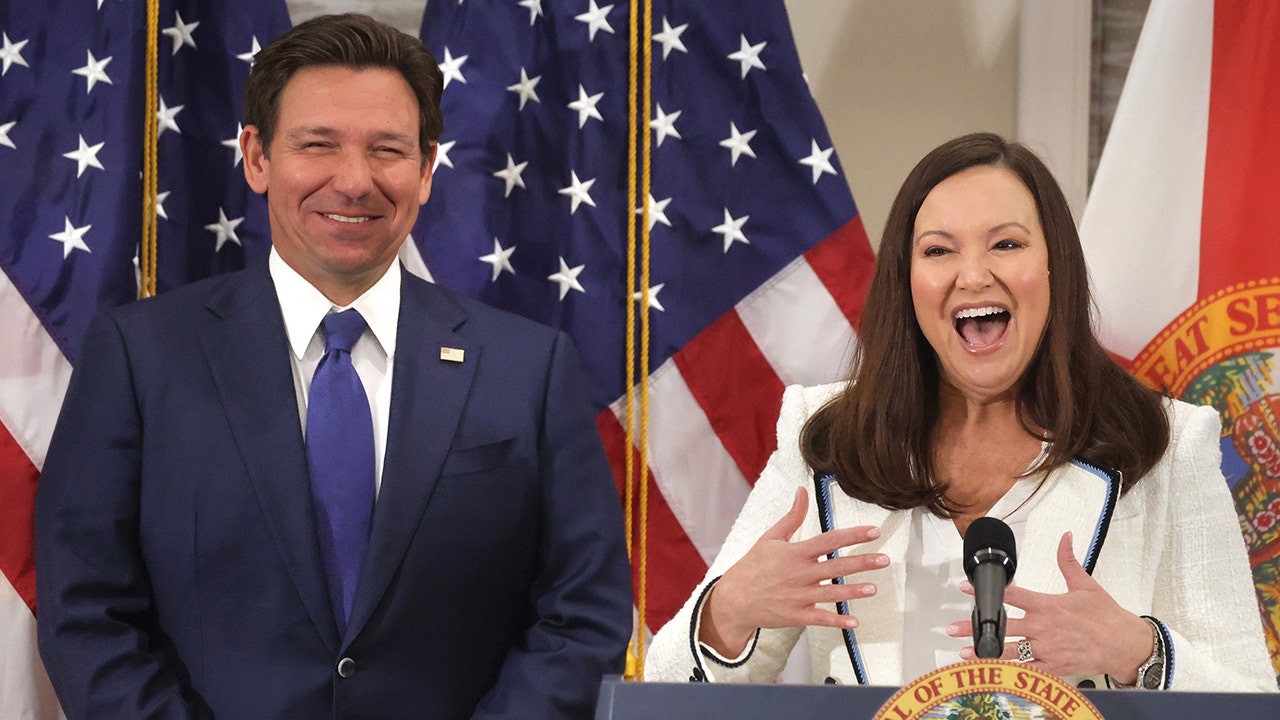Georgia
This Gilded Age Resort Island Is Now a Peaceful Paradise
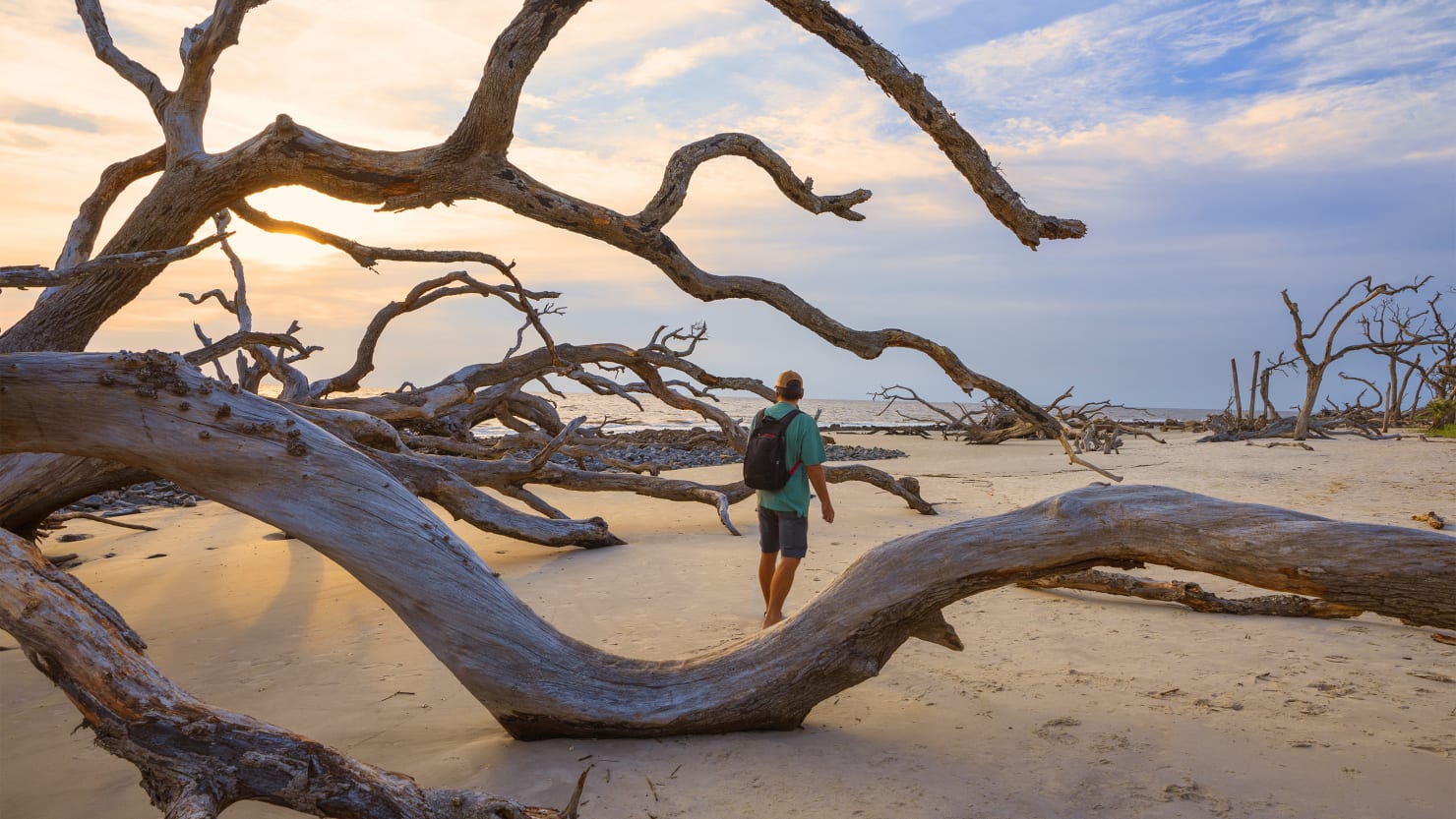
This is the latest installment of It’s Still a Big World, our series on underrated destinations.
I came to Jekyll Island, a verdant barrier island at the center of Georgia’s “Gold Coast,” unsure of what to expect. Having grown up in the South before moving to New York in my twenties, I knew I would eat well (and I did). I also knew I’d enjoy the South’s fabled hospitality, the effortless conviviality displayed by people despite the region’s uneasy history. I pictured iced tea and cool breezes pushing through the shade of ancient oaks hung thickly with Spanish moss. What I didn’t expect from Jekyll was the intensity of its people’s affection for the island itself and for the preservation of its historical and natural wonders.
Situated roughly halfway between Savannah and Jacksonville, Jekyll Island is separated from the mainland by a vast wetland prairie. “Terrapin Crossing” signs line the six-mile causeway to Jekyll, warning drivers to slow down as they approach the toll booth (it costs $8 per day or $75 per year for a parking pass). Proceeds go toward the conservation and preservation efforts of the Jekyll Island Authority, a governor-appointed organization tasked with keeping the island’s heritage intact.
Jekyll is home to just 1,000 full-time residents spread across 5,700 acres of lush oak and palmetto scrub. By comparison, more than 20,000 sea turtles hatched on the island’s beaches in 2022. Nature is the dominant feature of the island’s landscape. It feels far removed from the modern world. Days pass slowly and quietly, but that has always been the crux of its allure.
During the Gilded Age, Jekyll was one of the nation’s most exclusive winter resorts. Jekyll was less ostentatious than northern retreats like Newport, Saratoga, and Bar Harbor—social life here revolved around the Jekyll Club, founded in 1886 as a grand hotel and hunting lodge. Its roster included such notables as J. Pierpont Morgan, William Kissam Vanderbilt, and William Rockefeller, and it is said that when all its members were present, one-sixth of the planet’s GDP was under one roof.
The Jekyll Club shuttered in 1942, a victim of wartime complications, and the clubhouse now operates as a hotel. Life on Jekyll Island has become a bit less rarefied, but the qualities that attracted the titans of yesteryear continue to draw visitors to its peaceful shores.
The original Jekyll Club.
Jekyll Club Island Resort
Perhaps the most notable change for Jekyll came in 1954, when its six-mile causeway was completed, connecting it to the mainland for the first time. Prior to that, a trip to Jekyll Island required a boat ride. Most guests journeyed south by train to the port town of Brunswick, where a ferry would shuttle them across the marsh. Some wealthier guests arrived by private yacht, but even for them, getting to Jekyll took time and effort. For it, they were rewarded with a kind of edenic quietude unattainable in most other resort towns.
While visiting, I stayed at the former Jekyll Island Club, now operating as the Jekyll Island Club Resort. Its sprawling campus includes the clubhouse itself, beautifully restored and maintained. There are also a handful of adjacent “summer cottages,” the mansions built by the club’s wealthiest members, which are especially popular for wedding parties. There is even a splendid little interdenominational chapel which boasts a Tiffany glass window (currently being restored, the window is scheduled to be reinstalled to great fanfare in fall 2023).
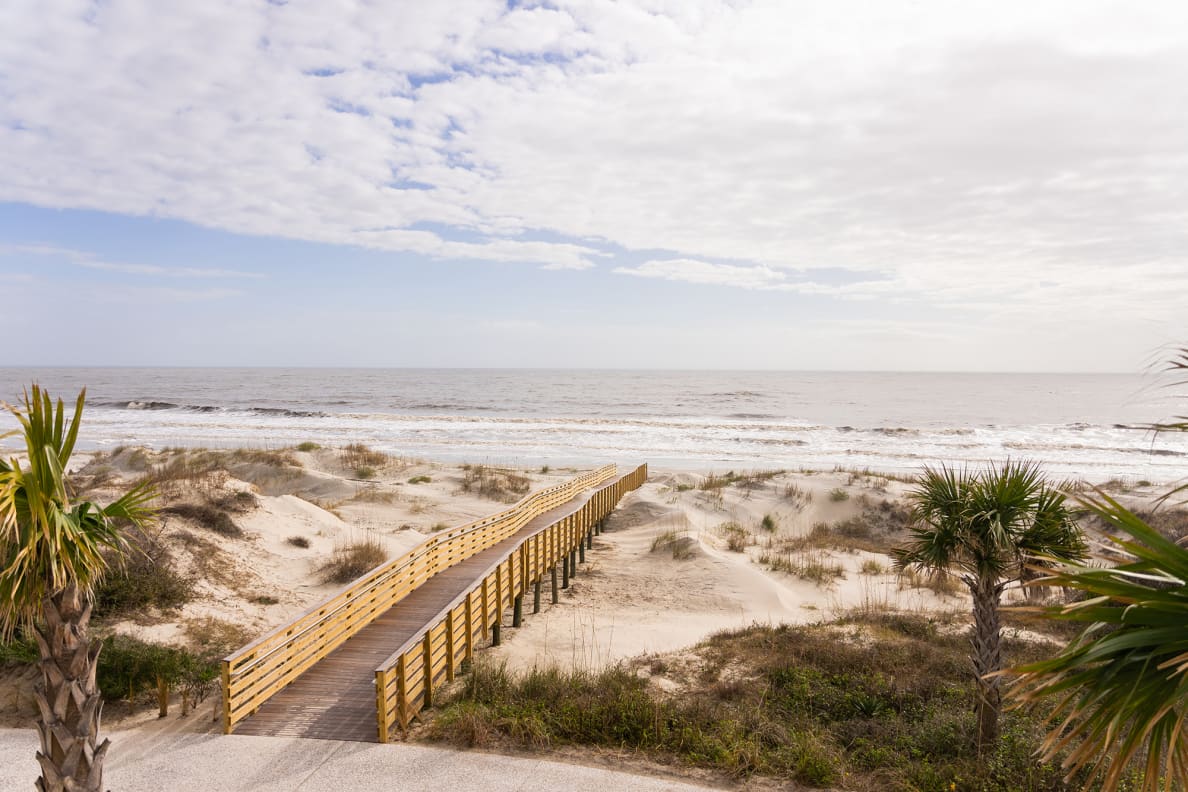
Jekyll Club Island Resort
In all, the resort boasts 157 guestrooms, a pool, a gym, multiple bars and cafes, and a formal dining hall, all encircled by deep verandahs which invite guests to escape the heat of the day in plush comfort. Most interestingly, the former clubhouse’s many out-buildings have been adapted for use as shops and galleries: its stables are now the outstanding Mosaic, Jekyll Island Museum, and its wharf is now a restaurant with splendid sunset views. The whole complex is fully pedestrianized, a rare luxury in such a car-centric corner of the world.
My itinerary kept me busy, touring the island’s museum and other historic structures, trying local restaurants, and even going horseback riding on the beach. Jekyll is an easy place to love, peaceful and replete as it is with natural beauty. But I was most impressed by its people’s uniform and unblinking understanding of, and respect for, the island’s complicated history as well as its fragile ecosystem.
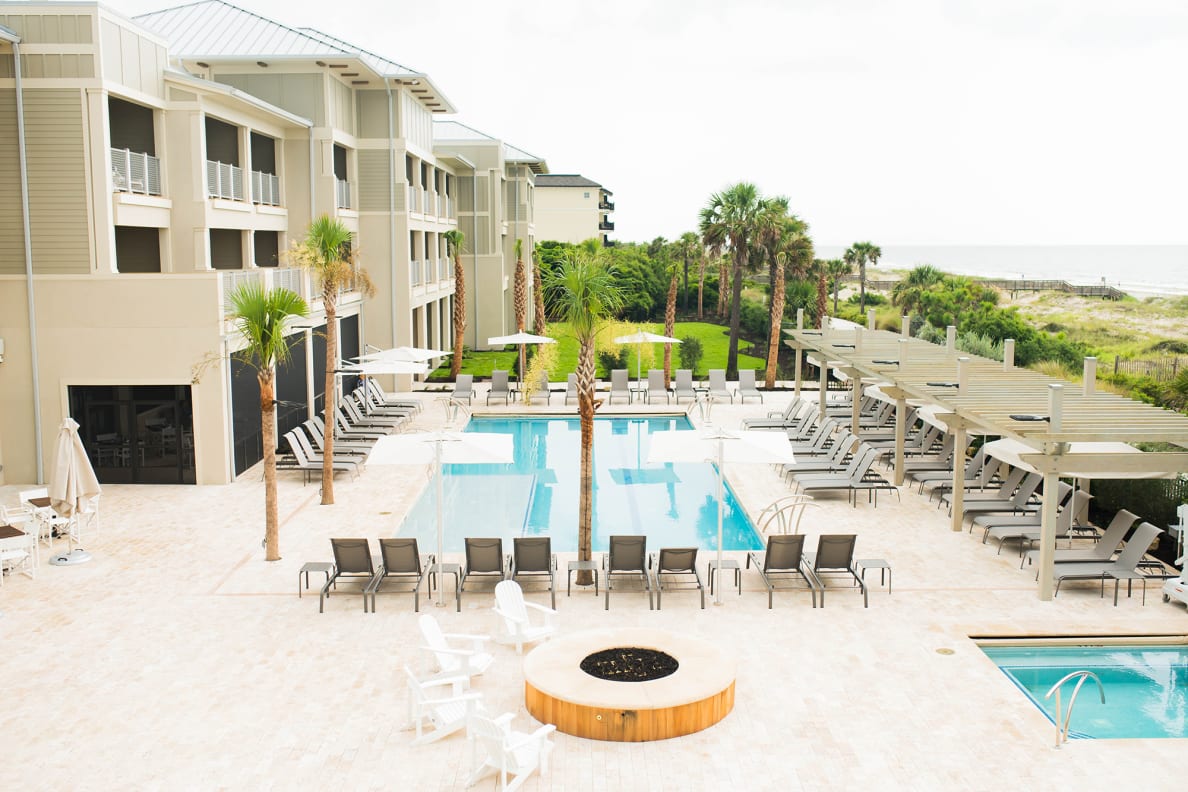
The Jekyll Club Island Resort.
Jekyll Club Island Resort
The Georgia Sea Turtle Center, a short walk from the resort, operates a rehabilitation center for injured turtles. Its staff also oversee protection and monitoring of local nesting sites which line the island’s dunes. Those dunes exist largely thanks to the Jekyll Island Authority, which insists that fully 65 percent of the island is to remain wild in perpetuity.
That wilderness has allowed not just sea turtles, but alligators, horseshoe crabs, and a vast array of birds (including bald eagles) to thrive in harmony with the island’s residents and guests. Where development is permitted on Jekyll, it is done with as little impact on nature as possible. This is most apparent on the island’s oceanfront, where virtually no buildings have been built directly on the beach. This allows for the island’s aforementioned dunes, heaped with mature trees and scrub brush, to do their job of protecting against erosion. Thanks to them, Jekyll maintains some of the region’s widest, most stunningly intact beaches.
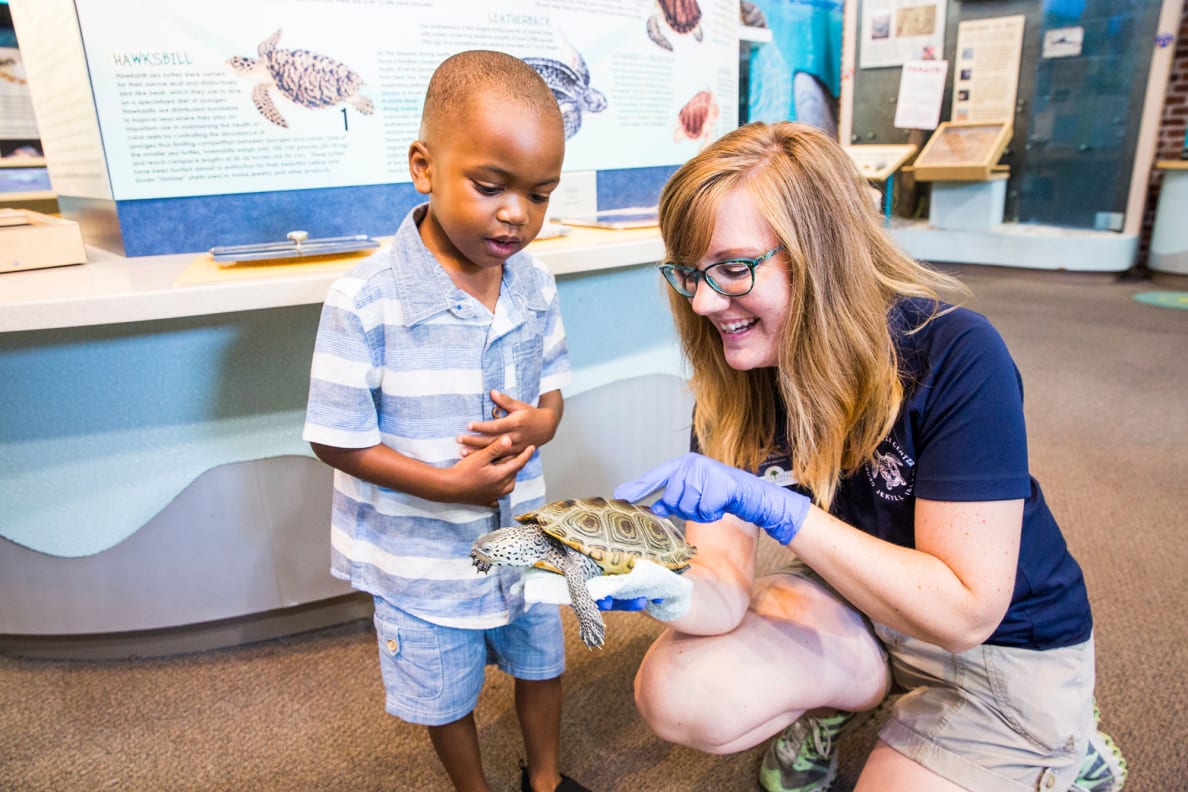
The Georgia Sea Turtle Center.
Georgia Sea Turtle Center
St. Andrews Beach, at the island’s southwestern tip, was the site of one of the more shameful events in Jekyll’s long history. In 1858, just 28 years prior to the Jekyll Island Club’s founding, a ship called The Wanderer laid anchor there, carrying 407 enslaved African people who’d survived the horrific 42-day journey across the ocean. Despite the nation’s abolition of the transatlantic slave trade in 1808, a vast network of smugglers continued to ply the Middle Passage, bringing many thousands more enslaved Africans into the United States over the next half-century.
The identities of the majority of the people brought over on The Wanderer are lost. Most were smuggled away from Jekyll to be sold in Savannah or other nearby cities. But their story lives on as part of “The Wanderer Memory Trail,” a designated UNESCO Slave Route Project Site, which interprets the ship’s story through the recollections of Umwalla, an African boy who survived the journey in 1858.
Through informative and interactive displays, visitors walk through the sandy forest, tracing Umwalla’s life from his memories of Africa, through the arduous journey aboard The Wanderer, to the golden shores of Jekyll. The path ends with a climb up a wooden tower which affords panoramic views of the beach where Umwalla and his fellow captives would have landed 165 years ago. The gravity of it casts a pall on an otherwise beautiful scene.
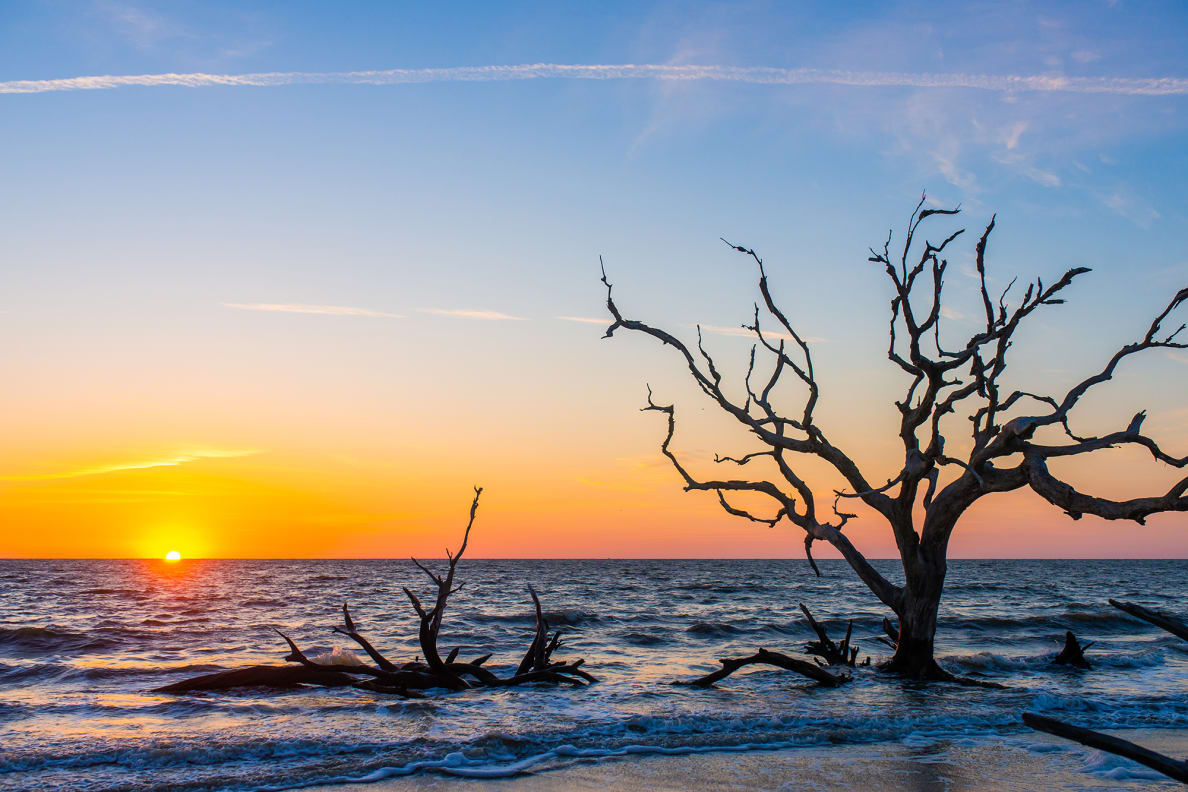
Jekyll Island driftwood beach.
Jekyll Club Island Resort
Back at the resort, I was given a tour of Mosaic, Jekyll Island Museum, by its curator Andrea Marroquin. The name Mosaic speaks to the museum’s commitment to examining and contextualizing the many pieces which make up the island’s rich history. Recently renovated and expanded, the museum is impressive for the breadth of its collection and the fluidity with which it weaves together so many seemingly disparate stories.
Everything is represented, from the island’s more recent history as a state park, through its time as a Gilded Age retreat, to its years as a cotton plantation and, before that, its centuries as a Native American hunting ground. Perhaps most poignantly, the museum has reconstructed a section of the below-deck hold of The Wanderer, where the likes of Umwalla would have been held for more than a month in unfathomable conditions. The ship’s large iron cooking pot, displayed nearby, is believed to have been used to cook the first meal for its captives on St. Andrews Beach in 1858.
Such commitment to preservation and storytelling is widespread on Jekyll Island. Very little is done there without intention and an eye to the future. The island is special, and the people tasked with its care know that. Yes, it boasts stunning sunsets, a plush resort, terrific restaurants, and beautiful beaches. But it is also a place haunted by all the sins and triumphs of the last three centuries. With the commitment of its caretakers, and with guidance from the Jekyll Island Authority, its stories will continue to enrich visitors for the next three centuries.

Georgia
Georgia’s Pathways to Coverage Program – The First Year in Review Fact Sheet – Georgia Budget and Policy Institute

In July 2023, Georgia launched the Pathways to Coverage program, which offers health care coverage to adults with lower incomes who do not have access to affordable health insurance. To be eligible they must work, attend school, volunteer or complete another qualifying activity for at least 80 hours per month. The program covers the cost of many of the same medical services as traditional Medicaid, including doctor visits, hospital stays and prescriptions. This fact sheet provides policymakers and advocates with an overview of the program’s first year and offers recommendations for improving upon the existing program design.
Here are some key takeaways based on the program’s first year:
Enrollment in the Pathways to Coverage program fell far short of expectations and need. More than 40% of Georgia’s counties still had fewer than 10 enrollees despite the state having one of the highest percentages of uninsured populations in the nation. If the state continues to enroll about 4,231 enrollees per year as it did in the first year and assuming no one is disenrolled, it will take more than 12 years to achieve the original five-year enrollment goal (52,509).
A cumbersome enrollment process and restrictive eligibility criteria appeared to contribute to the program’s low enrollment in the first year. Potentially eligible Georgians face a steep “paperwork” burden – from completing a lengthy online or paper application to compiling documents to verify qualifying activities and hours. Only about half of individuals who showed initial interest in applying to the program submitted a complete application. Preliminary data also indicate that at least one in every five denials for those who do submit a complete application is due to failure to meet the qualifying hours and activities requirement.
Pathways to Coverage is a costly program for Georgia taxpayers, and most spending through the end of the first year covered administrative expenses rather than health care benefits. Since the program was approved through the end of the first year of implementation, a total of almost $58 million in combined state and federal funds was spent on the program. That amounts to an average of $13,000 per enrollee. Spending on upgrades to Georgia’s online eligibility and enrollment system represents the largest proportion of total program costs and was almost five times higher than spending on healthcare benefits for enrollees.
For current enrollment and program cost data, please visit the Data Tracker page at GeorgiaPathways.org
Beyond Year One: Recommendations and Next Steps
With Pathways to Coverage up for renewal in September 2025, the state has an opportunity to leverage lessons learned from the first year to make the program more effective and less costly and to streamline the bureaucratic red tape that burdens both enrollees and state agency staff.
Programmatic recommendations:
- Eliminate monthly reporting and premium collection
- Expand automated verification of qualifying hours and activities at initial application and yearly renewal using electronic data sources
- Expand work requirement exemptions (in alignment with SNAP exemptions) to enable eligible veterans, full-time parents of young children, former foster youth and others to access the program
- Make Pathways to Coverage an ‘opt-out’ versus an ‘opt-in’ program
- Improve education and outreach for potentially eligible Georgians
- Improve communication with applicants and enrollees
System-level recommendations:
- Modernize Georgia’s public benefits eligibility and enrollment infrastructure
- Increase transparency and public data reporting and open up opportunities for stakeholder engagement
For more context on each recommendation and for an additional list of transformational recommendations like full Medicaid expansion, please download the full report “Georgia’s Pathways to Coverage Program – The First Year in Review” from the Resources page at GeorgiaPathways.org.
Georgia
Giuliani settles legal fight with former Georgia election workers and agrees to stop defaming them

WASHINGTON, DC – MAY 19: Former New York City Mayor and former personal lawyer for former President Donald Trump Rudy Giuliani talks to members of the press before he leaves the U.S. District Court on May 19, 2023 in Washington, DC. Giuliani is sued
NEW YORK – Rudy Giuliani reached a deal Thursday that lets the cash-strapped ex-New York City mayor keep his homes and belongings, including prized World Series rings.
The deal was in exchange for unspecified compensation and a promise to never again speak ill of two former Georgia elections workers who won a $148 million defamation judgment against him.
Giuliani’s legal trouble
The backstory:
Rudy Giuliani, once known as “America’s Mayor” for his leadership after 9/11, faced legal challenges after serving as President Trump’s personal attorney.
Following the 2020 election, Giuliani made false claims about two Georgia election workers, Ruby Freeman and Wandrea “Shaye” Moss, leading to a $148 million defamation judgment against him.
Giuliani’s settlement
What we know:
Giuliani reached a settlement allowing him to keep his homes and World Series rings in exchange for unspecified compensation and a promise not to defame Freeman and Moss again.
The agreement resolves all pending litigation and cancels a trial that was set to determine the ownership of his Florida condominium and rings.
Giuliani stated that the settlement “does not involve an admission of liability or wrongdoing.”
What does Freeman, Moss get?
What we don’t know:
The specifics of the settlement, including the amount Giuliani agreed to pay Freeman and Moss, remain undisclosed.
It is unclear how Giuliani is financing the settlement or if he has any assistance in doing so.
Giuliani’s legal troubles unfolded
Timeline:
Giuliani filed for bankruptcy shortly after the defamation verdict, pausing collection efforts.
Last week, a judge found Giuliani in contempt for failing to disclose information about his assets.
The settlement was reached after three days of negotiations, just before a trial was set to begin.
Freeman, Moss react
What they’re saying:
FFreeman and Moss expressed relief, stating, “The past four years have been a living nightmare… Today is a major milestone in our journey.”
Giuliani remarked, “This litigation has taken its toll on all parties,” and emphasized that no one deserves threats or harassment.
Chapter closed for Giuliani
What’s next:
With the settlement in place, Freeman and Moss can move forward with their lives.
Giuliani retains his assets and has agreed not to speak ill of the women again, marking a significant step in closing this chapter of his career.
The Source: This article is based on original reporting by the Associated Press. Associated Press writer Dave Collins contributed reporting.
Georgia
Educational Leader Walter Kimbrough to speak at Georgia Southern University’s MLK Celebration Jan. 17 | Newsroom

Renowned speaker and higher education leader Walter Kimbrough, Ph.D., will deliver the keynote address at Georgia Southern University’s celebration of Rev. Martin Luther King Jr.’s life and legacy on Friday, Jan. 17.
“Dr. Kimbrough is an established leader in higher education and has recently emerged as a voice on free speech, which is a timely topic and a hallmark of campuses of higher education,” said Associate Vice President for Organizational Effectiveness, Leadership Development, and Inclusive Excellence, Dominique Quarles, Ph.D. “I am excited to have Dr. Kimbrough, someone who has served as a college president for two decades, discuss the challenges and importance of free speech within our community.”
A champion for student success and economic development for historically Black colleges and universities, Kimbrough has served in student affairs roles at Emory University, Georgia State University, Old Dominion University and Albany State University, among others. He was named the 12th president of Philander Smith College in 2004. In 2012, he became the 7th president of Dillard University in New Orleans, Louisiana, where he served for 10 years. Presently, he serves as the interim president of Talladega College.
“Being asked to give a Martin Luther King, Jr. address is one of the engagements I accept with the deepest humility because it is an awesome responsibility,” said Kimbrough. “It is an opportunity to place in context the work of Dr. King which has been watered down to predictable sound bites, sharing parts of his work we never mention.”
Georgia Southern’s celebration of King’s legacy is open to the University community. The breakfast celebration event will be held on the Statesboro Campus at 8:30 a.m. in the Williams Center Multipurpose Room. The lunch celebration will be held on the Armstrong Campus in Savannah in the Armstrong Center Ballroom at 12:30 p.m.
Georgia Southern students are also encouraged to attend the King Holiday Celebration Parade in Statesboro Jan. 18, as well as the Dr. Martin Luther King Jr. Annual Parade in Savannah Jan. 20.
-
/cdn.vox-cdn.com/uploads/chorus_asset/file/25822586/STK169_ZUCKERBERG_MAGA_STKS491_CVIRGINIA_A.jpg)
/cdn.vox-cdn.com/uploads/chorus_asset/file/25822586/STK169_ZUCKERBERG_MAGA_STKS491_CVIRGINIA_A.jpg) Technology1 week ago
Technology1 week agoMeta is highlighting a splintering global approach to online speech
-

 Science6 days ago
Science6 days agoMetro will offer free rides in L.A. through Sunday due to fires
-
/cdn.vox-cdn.com/uploads/chorus_asset/file/25821992/videoframe_720397.png)
/cdn.vox-cdn.com/uploads/chorus_asset/file/25821992/videoframe_720397.png) Technology1 week ago
Technology1 week agoLas Vegas police release ChatGPT logs from the suspect in the Cybertruck explosion
-

 News1 week ago
News1 week agoPhotos: Pacific Palisades Wildfire Engulfs Homes in an L.A. Neighborhood
-

 Education1 week ago
Education1 week agoFour Fraternity Members Charged After a Pledge Is Set on Fire
-

 Business1 week ago
Business1 week agoMeta Drops Rules Protecting LGBTQ Community as Part of Content Moderation Overhaul
-

 Politics1 week ago
Politics1 week agoTrump trolls Canada again, shares map with country as part of US: 'Oh Canada!'
-
/cdn.vox-cdn.com/uploads/chorus_asset/file/23935558/acastro_STK103__01.jpg)
/cdn.vox-cdn.com/uploads/chorus_asset/file/23935558/acastro_STK103__01.jpg) Technology6 days ago
Technology6 days agoAmazon Prime will shut down its clothing try-on program

















